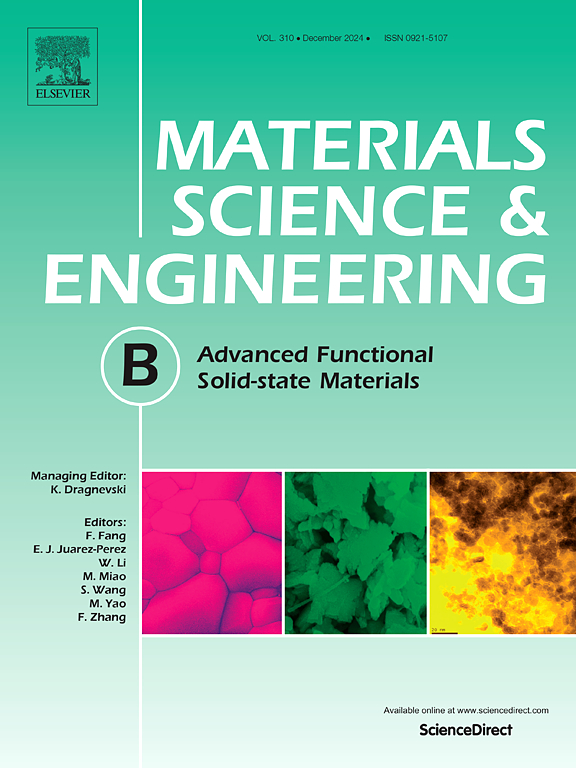A comparison analysis on electrical conductivity relaxation methods
IF 3.9
3区 材料科学
Q2 MATERIALS SCIENCE, MULTIDISCIPLINARY
引用次数: 0
Abstract
This study compares the Distribution of Characteristic Times (DCT) and ECRTOOLS for analyzing oxygen transport kinetics in mixed ionic-electronic conductors (MIECs). Experimental validation on dense Sr2Fe1.5Mo0.5O6−δ(SFM) under stepwise oxygen partial pressure changes demonstrates that ECRTOOLS, relying on three-dimensional Fickian diffusion and single-mechanism assumptions, fails to accurately fit data. In contrast, DCT converts time-domain relaxation into frequency-domain spectra, resolving multi-mechanistic dynamics via characteristic time distributions. DCT distinguishes surface exchange control (single peak), bulk diffusion control (τP1/τP2 = 9), and mixed control (τP1/τP2 > 9), achieving lower residuals than ECRTOOLS. While ECRTOOLS yields unphysical parameters violating Biot number consistency, DCT captures synergistic oxygen vacancy-surface exchange interactions. Challenges persist in interpreting non-ideal spectral artifacts and linking peaks to microstructural properties. This work establishes DCT as a superior tool for probing complex transport mechanisms, advancing the design of electrochemical devices like solid oxide fuel cells.[email protected]
电导率弛豫方法的比较分析
本研究比较了混合离子-电子导体(MIECs)中氧输运动力学的特征时间分布(DCT)和ECRTOOLS。对致密Sr2Fe1.5Mo0.5O6−δ(SFM)在氧分压逐步变化条件下的实验验证表明,ECRTOOLS依赖于三维菲克扩散和单机制假设,无法准确拟合数据。相反,DCT将时域弛豫转换为频域谱,通过特征时间分布解析多机制动力学。DCT区分表面交换控制(单峰)、整体扩散控制(τP1/τP2 = 9)和混合控制(τP1/τP2 >;9),获得比ECRTOOLS更低的残差。ECRTOOLS产生的非物理参数违背了Biot数的一致性,而DCT捕获了协同的氧空位-表面交换相互作用。在解释非理想的光谱伪影和将峰与微观结构特性联系起来方面仍然存在挑战。这项工作确立了DCT作为探测复杂传输机制的优越工具,推动了固体氧化物燃料电池等电化学器件的设计。(电子邮件保护)
本文章由计算机程序翻译,如有差异,请以英文原文为准。
求助全文
约1分钟内获得全文
求助全文
来源期刊

Materials Science and Engineering: B
工程技术-材料科学:综合
CiteScore
5.60
自引率
2.80%
发文量
481
审稿时长
3.5 months
期刊介绍:
The journal provides an international medium for the publication of theoretical and experimental studies and reviews related to the electronic, electrochemical, ionic, magnetic, optical, and biosensing properties of solid state materials in bulk, thin film and particulate forms. Papers dealing with synthesis, processing, characterization, structure, physical properties and computational aspects of nano-crystalline, crystalline, amorphous and glassy forms of ceramics, semiconductors, layered insertion compounds, low-dimensional compounds and systems, fast-ion conductors, polymers and dielectrics are viewed as suitable for publication. Articles focused on nano-structured aspects of these advanced solid-state materials will also be considered suitable.
 求助内容:
求助内容: 应助结果提醒方式:
应助结果提醒方式:


